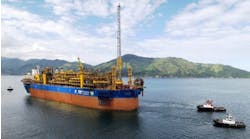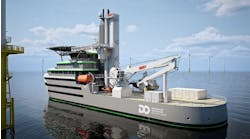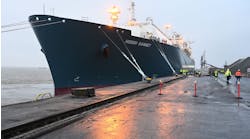Offshore staff
HAMBURG, Germany — SAL Heavy Lift has signed contracts with Wuhu Shipyard in China for up to six heavy-lift vessels, under a joint program with SAL’s partner Jumbo Shipping.
The first two Orca class vessels, due to be delivered from mid-2024 onward, will be dedicated to transporting offshore wind turbine components under a long-term commitment with Siemens Gamesa Renewable Energy.
Two more will serve the Jumbo-SAL-Alliance clients in the first half of 2025.
The vessels will each measure 149.9 by 27.2 m with a capacity of 14,600 dwt and a box-shaped single cargo. Provided the hatch covers, with a capacity of 10 t/sq m, are not used for stowing heavy deck cargoes such as 3,000-t cable carousels, the vessels will be able to accommodate over-height cargo in the hold and sail with open hatch covers up to full scantling draft.
With ice class notation 1A, a Polar Code certification and a reduced design temperature of the hull and equipment, the ships will be able to operate in cold conditions.
Two 800 t Liebherr cranes onboard will handle items weighing up to 1,600 t in tandem.
According to SAL Heavy Lift CTO Sebastian Westphal, “Despite extremely high crane pedestals of more than 11 m, the overall crane height and thereby the vessel’s air draft remains at just about 38 m. This makes it possible for the vessel to pass Kiel Canal and enter strategically important ports worldwide.
“The fully electric cranes are perfect for the vessel’s intelligent energy management and recovery system. This is based on a battery storage system that can be used together with conventional gensets in hybrid mode, or in combination with the vessel’s shore power connection for fully electric port operations.”
In addition, the Orca vessels will have a propulsion system comprising compact main engines and a diesel-electric booster function. According to SAL, this hybrid setup will provide a wide range of economic speed settings and redundancy.
Service speed is typically 15 kn, with the vessels consuming less than 20 t of fuel oil per day, although they will be able to reach a maximum speed of 18.5 kn for urgent deliveries of components to a windfarm installation vessel.
Finally, the vessels are equipped with dual-fuel engines and can use methanol as an alternative fuel.
09.07.2022



